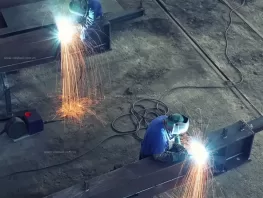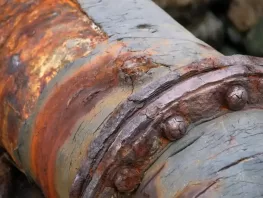
Clean Room Painting Essentials: Elevating Hygiene in Pharmaceutical Facilities
Posted Sep 04, 2023 by Dave Scaturro

Clean rooms are the heart of pharmaceutical facilities, requiring the utmost precision and attention to detail. As these controlled environments demand stringent cleanliness standards, the painting process becomes a crucial aspect of maintaining a contaminant-free atmosphere. Keep reading to learn about best practices for clean room painting in pharmaceutical settings, ensuring compliance, sterility, and a flawless finish.
Paint Selection: A Delicate Balance of Performance and Cleanliness
Choosing the right paint for clean room environments is a delicate balance between meeting stringent performance requirements and ensuring a hygienic space. Low-VOC (volatile organic compounds) and non-toxic paints prevent any contamination risks to pharmaceutical products or processes. Moreover, opt for paints with antimicrobial properties to create an additional layer of protection against potential pathogens.
Surface Preparation: The Foundation of a Durable Finish
Surface preparation is the foundation upon which a successful clean room painting project is built. Surfaces to be painted must be thoroughly cleaned to eliminate dust, debris, and contaminants. Depending on the type of clean room, this process might involve specialized cleaning agents, HEPA vacuuming, and even air filtration systems to maintain the highest level of purity.
Adhering to Regulatory Standards
Pharmaceutical clean rooms are subject to strict regulatory standards set by organizations like the FDA. Compliance with these standards is non-negotiable, making it essential to choose paints that adhere to the specific guidelines outlined for pharmaceutical environments. Ensure your chosen paints and coatings meet the necessary requirements for cleanliness, durability, and VOC emissions.
Creating a Controlled Environment
Maintaining a controlled environment during the painting process prevents any cross-contamination. This involves careful consideration of factors like temperature, humidity, and airflow. Specialized equipment and techniques are often employed to ensure the conditions are optimal for paint application and drying. Additionally, sealing off the work area to prevent dust and particles from entering is crucial.
Precision and Expertise: Hiring Professional Clean Room Painters
Clean room painting is a specialized skill that demands precision and expertise. Entrusting this task to professional clean room painters like Alpine Painting and Sandblasting is the key to a successful outcome. Our team is well-versed in the unique challenges of pharmaceutical environments, ensuring that every step of the painting process aligns with the highest standards of cleanliness and quality.
The Final Touch: Validating the Painted Surface
Once the painting is complete, the validation process ensures that the newly painted surfaces meet the stringent requirements of the clean room environment. This involves thorough inspections to ensure that the paint adheres properly, meets cleanliness standards, and does not introduce any contaminants. Validation is the last step to guarantee that the painting process has achieved its intended purpose.
Clean room painting in pharmaceutical facilities is a meticulous process that demands a keen understanding of both painting techniques and the unique requirements of controlled environments. By selecting the right paints, meticulously preparing surfaces, maintaining a controlled environment, and adhering to regulatory standards, you can ensure that your pharmaceutical clean rooms remain contaminant-free and in compliance. For optimal results, partner with experts who specialize in clean room painting to safeguard the integrity of your pharmaceutical operations.









